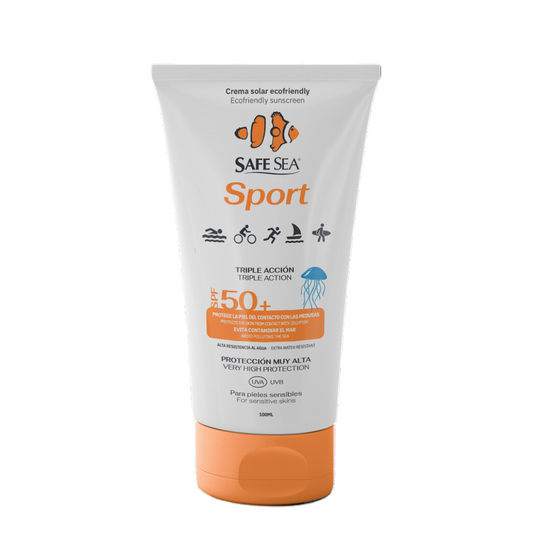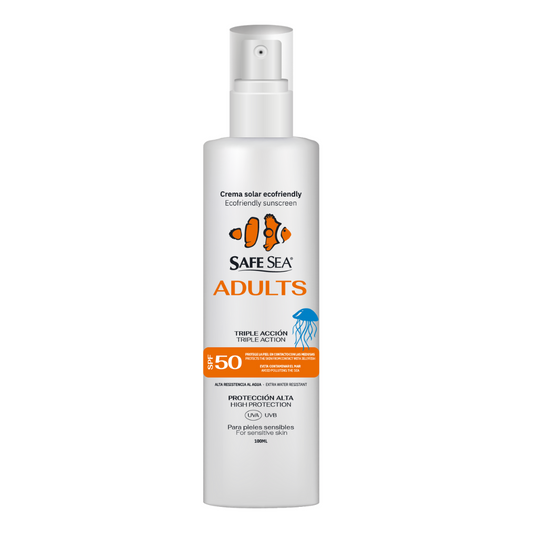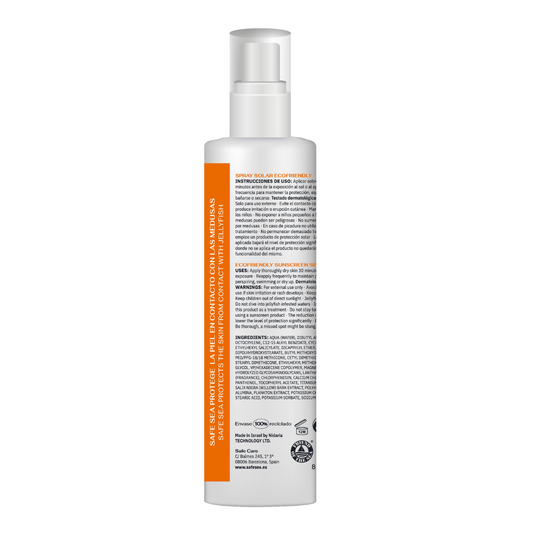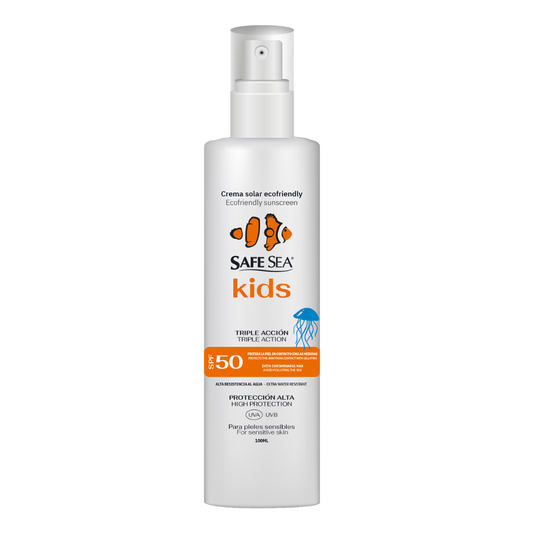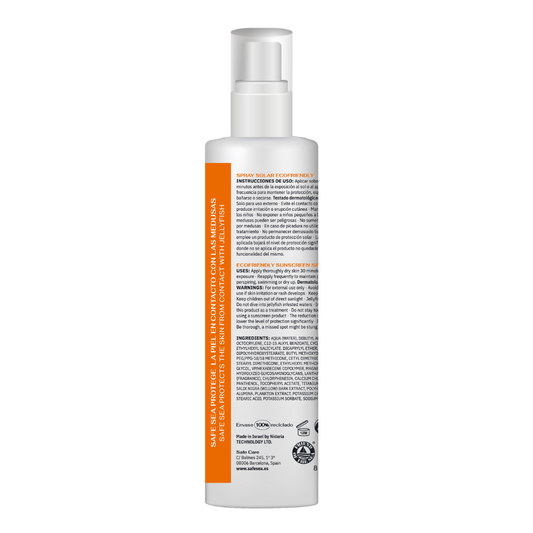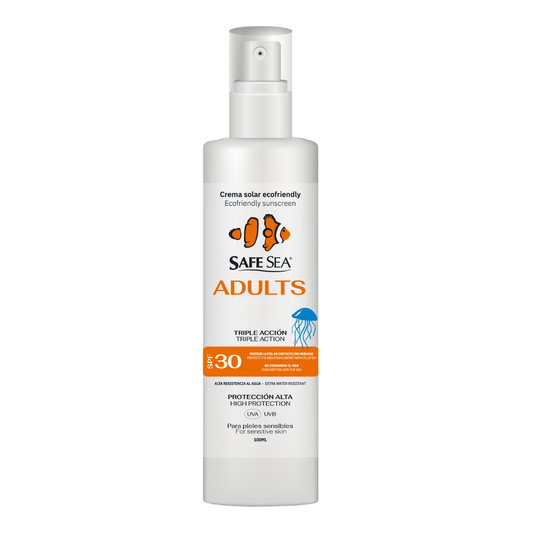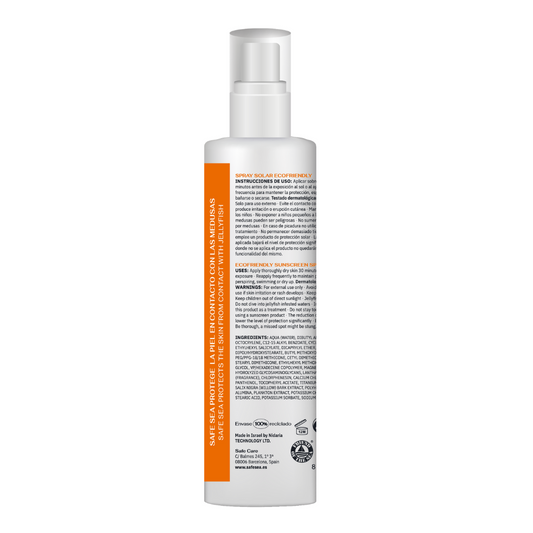
Did you know that swimming is one of the most complete workouts there is? It fuses cardio and strength. The body moves steadily increasing the heart rate while working against the resistance of the water, thus strengthening muscles. Swimming is a great way to take care of yourself. And using proper sun protection for such a beneficial activity is, too. Here are answers to the most common myths and truths about sun protection for swimmers. Read on!
Myths and truths about sun protection for swimmers
If you've been swimming for a long time, you've probably heard about the importance of using an effective sports sunscreen. But as with many other recommendations, you should not pay attention to everything you hear or read on the web. Sometimes, wrong information is given. Here are the truths and myths about sun protection for swimmers.
Does sunlight strike the skin underwater?
If you like to swim in the open sea you have probably already wondered if you can get sunburned underwater. There is a widespread belief that while swimming, being in the water, you are completely protected from the sun. Nothing could be further from the truth. Water, not only does not protect us from the harmful effects of the sun, but being on the surface, "helps" the UV rays to penetrate with greater incidence in the skin. In the case of being one meter underwater, 75% of UVB rays continue to damage the skin.
Therefore, while swimming you can get sunburnt. For this reason, we recommend the specific use of sun protection for swimmers, formulated and inspired by the skin needs of any swimmer.
Among these needs, we highlight:
Water resistant sunscreen (fresh and salt water)
The main conditioning factor of sun protection for swimmers is its resistance to water. Whether swimming in a pool or in open water, it is highly recommended to use a sunscreen that remains adhered to the skin after a long aquatic activity. This is the only way to ensure effective and safe protection for the duration of training or competition.
In the case of long open water competitions, where the average swimming time usually reaches 2 to 3 hours, it is necessary to reapply the product. After 80 minutes of action, it may lose its effect. In addition, it is necessary to take into account that in salt water the body floats more and as we mentioned before, it is exposed to a higher percentage of UVB rays. Does this mean that more sunscreen should be used when swimming in the open sea? No. Applying sunscreen is equally important and necessary in both fresh and salt water.
Anti-jellyfish sunscreen: formulated for swimming
Safe Sea sunscreen is unique in the world for its ability to inhibit jellyfish stings. In addition to guaranteeing maximum protection against solar radiation, it prevents the jellyfish tentacles from activating their stinging cells when in contact with our skin.
How does Safe Sea avoid jellyfish stings?
The sting inhibition of this vegan sunscreen is based on preventing the activation of jellyfish nematocysts (darts). And it is based on and/or inspired by the chemical properties of the mucous lining of clownfish.
Clownfish and its power against jellyfish stings
The clownfish lives among sea anemones. They have stinging nematocysts similar to those of jellyfish. But their mucous coating prevents them from being stung by sea anemones. Nematocysts require both chemical and tactile stimulation to fire. Evolutionarily, it makes sense for jellyfish or sea anemones not to unnecessarily discharge their nematocysts against inanimate objects or themselves. Hence, the clownfish's coating mimics that of a jellyfish and it does not suffer their stings.
The studies of marine biologist Amit Lotan, founder of Safe Sea and a researcher specializing in cnidarians, were based on an observation of the behavior of clownfish. He discovered that they have polysaccharides identical to those that jellyfish have in their umbilicus and that this allows them to live freely among tentacles full of stinging cells. The clownfish mimics the stinging tentacles, which do not fire when they recognize it as their own.
This is the principle of the formula and the inhibition of the stinging cells sting if we are impregnated with the cream. It is the glycosaminoglycans and glycoproteins indicated in the INCI that are responsible for this property, and of course they do not come from any animal, clownfish or jellyfish. These glycosaminoglycans and glycoproteins are not of animal origin.
Stinging cell prevention method
Safe Sea thus prevents the nematocysts from being triggered. However, once the stingers have been triggered, Safe Sea cannot block or neutralize the sting and its venom. The inhibitor is not composed of a single chemical. It is an amalgam. Moreover, the hundreds of thousands of stinging cells function autonomously. And therefore, even with the tentacle detached from the jellyfish, they could be triggered.
In various scientific publications Safe Sea is literally recognized as an "effective jellyfish sting inhibitor. It significantly reduces the pain and skin reaction resulting from contact with the stinging cells of the jellyfish" ("Safe Sea jellyfishreport Stanford University"). In other words, the effectiveness of Safe Sea is recognized. But it hardly prevents contact in 100% of cases (i.e. 100% of the millions of autonomous stinging cells in its tentacles). And that is why the product's package insert recommends "not to bathe in jellyfish-infested waters".
If you found these tips on sun protection for swimmers interesting, share them on your social networks.
Thanks for reading. See you in the next post.



